If there's one thing that fascinates technology enthusiasts it's the comparison between the old and the new, especially when it comes to computer performance. Technological evolution has led to incredible increases in performance over the years, but how much have we actually improved compared to our 1980s predecessors? And, above all, how much fun would it be to compare a classic vintage computer with one of the modern gaming jewels? Let's do a performance comparison of CPUs and computers: vintage VS modern!

The idea of this video
I had the NEC V30 processor and math coprocessor installed on my late 1980s IBM PS/2 model 30. When I published the videos, the nicest question I received was: "But can we run Fortnite now"?
In this video and in this article, you will find the answer!
I had already created a video/article related to performance of the Commodore 64 VS modern PC. In that article, I took into consideration other parameters besides the speed of the CPU, for example the size of the storage media, the data transfer speed, etc…
CPU Performance Comparison: benchmarks
It is not easy to compare the performance of very different CPUs, such as those from the 1980s and modern ones. Roy Longbottom, an English computer scientist who has always worked on CPU benchmarks, came to our aid. In 2022 he celebrated 50 years of "computer benchmarking and stress testing".

In the video, I use Norton Utilities 6's SysInfo to measure the performance of vintage computers.
Also, even more interestingly, I use CheckIt version 3 to measure performance using the Dhrystone and Whetstone benchmark algorithms.
Finally, I use a program by Roy Longbottom to measure the performance of two modern CPUs using the Whetstone benchmark. In the video, I show how to load all the CPU cores of the computer and get an accurate measurement.
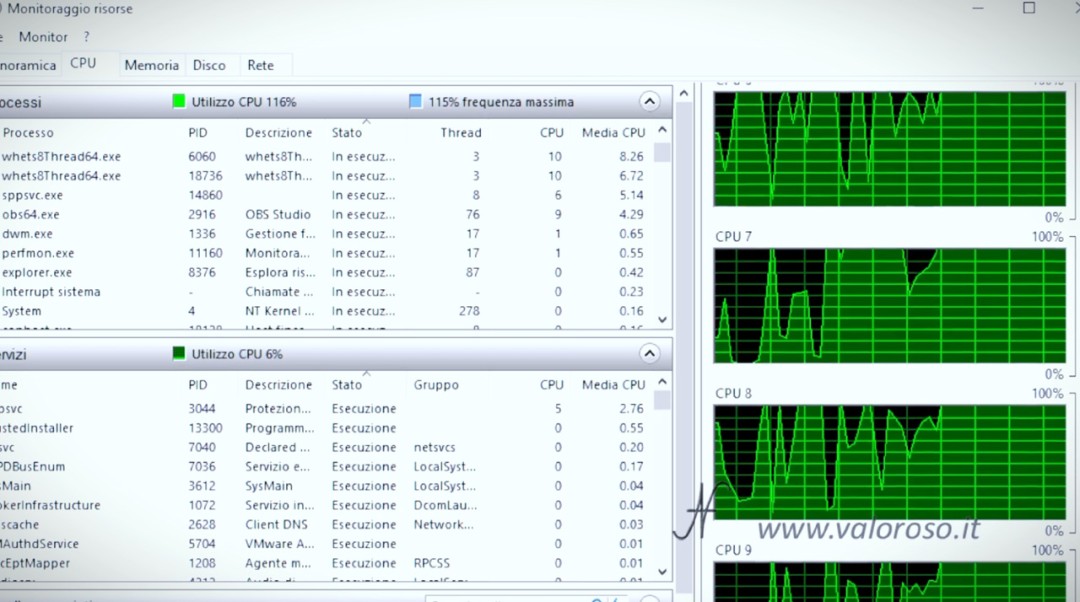
By measuring a homogeneous index, WIPS (Whetstone Instructions per Second), it is easier to compare the performance of CPUs and different computers.

Computers in the race
And here are the computers competing in this exciting CPU speed race.
IBM PS/2 Model 30, year 1987, with Intel 8086 processor and 640KB RAM, of which I replaced the processor with the NEC V30 and also installed the Intel 8087 mathematical coprocessor (FPU). In the photo, it's the one with the red on switch.
IBM PS/2 model 30 286, year 1988, with Intel 80286 processor and 1MB RAM, with and without Intel 80287 mathematical coprocessor (FPU). It's the one with the white on switch.
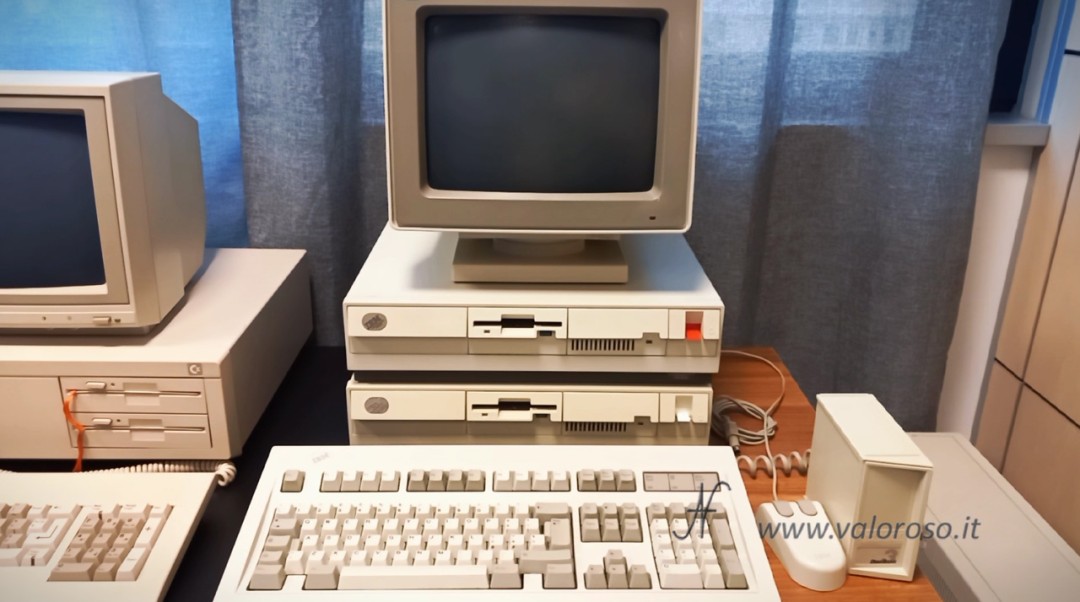
Olivetti M200, year 1988, recently found in a landfill by a friend of mine, with NEC V40 processor and 640KB RAM.

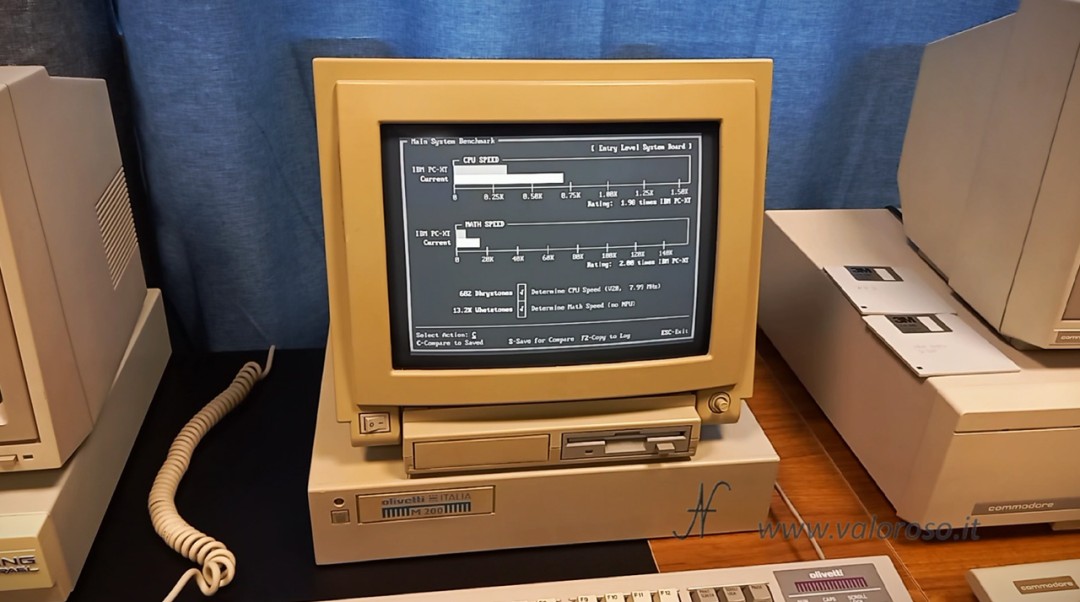
Frael King, from the late 80s, purchased by a customer of the same hairdresser as me, with NEC V20 processor and 512KB RAM.
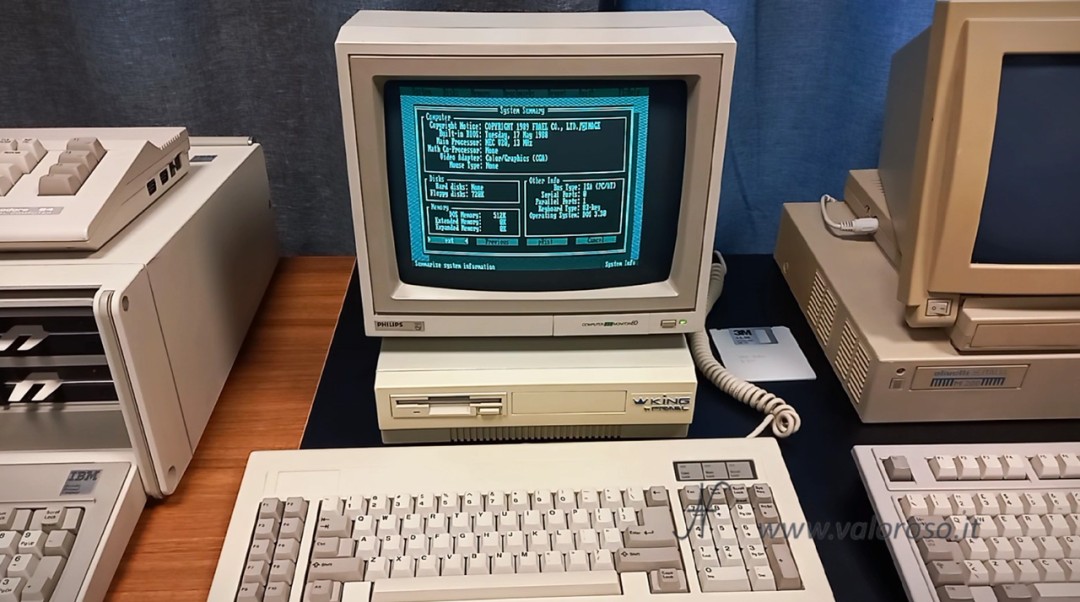
Olivetti Prodest PC1, year 1987, is the favorite of the race, with NEC V40 processor and 512KB RAM.
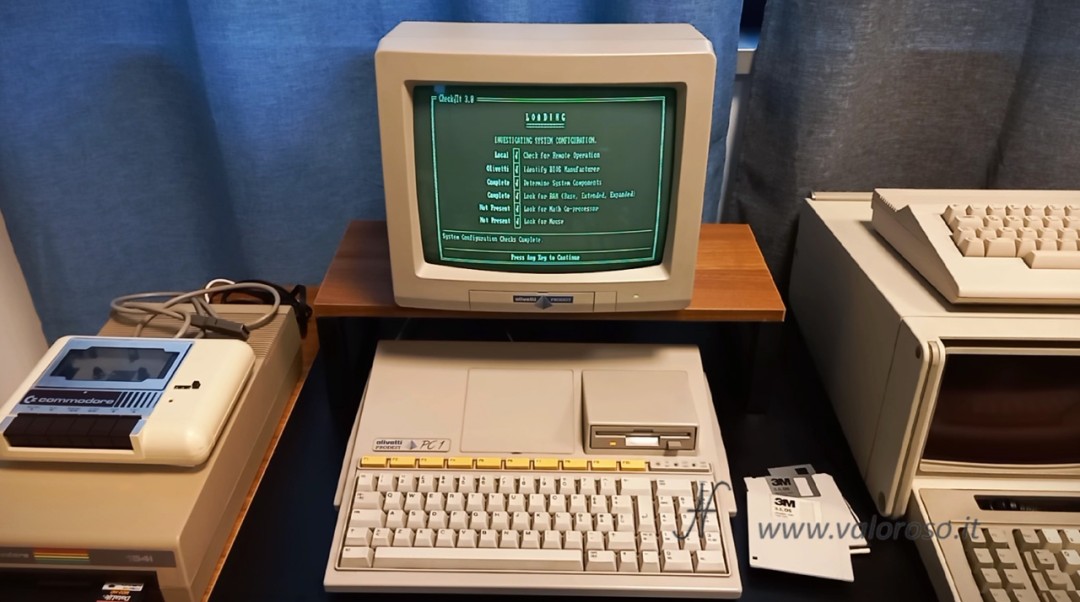
HP Z420, a workstation that is about ten years old, with Intel Xeon E5-4650 processor, 8 cores and 16 threads, 32GB RAM.
Gaming PC from 2023, which my son Leo and I assembled, with thirteenth generation Intel Core i5-13500 processor, 14 cores and 20 threads, 32GB RAM.
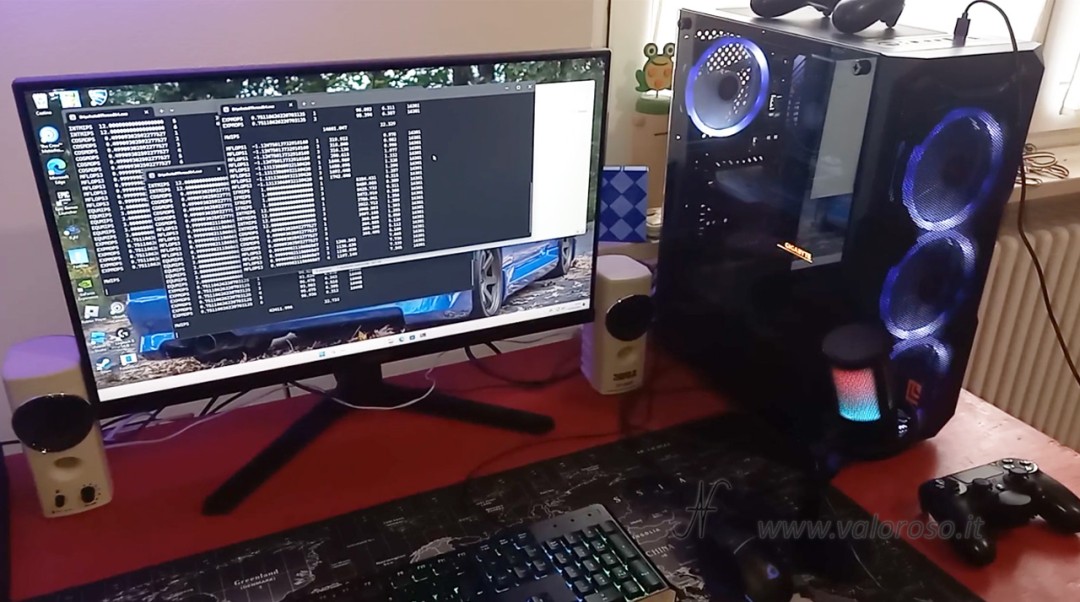
In your opinion, who will win the race?
CPU and computer performance comparison: let's see the results
| Computer and CPU model | Norton SysInfo | Dhrystone | Whetstone |
| IBM PS/2 model 30, Intel 8086 | 2.2 | 801 | 16.4K |
| IBM PS/2 model 30, Intel 8086 FPU | 2.2 | 779 | 239.7K |
| IBM PS/2 model 30, NEC V30 | 2.9 | 1023 | 20.4K |
| IBM PS/2 model 30, NEC V30 FPU | 2.8 | 995 | 270.2K |
| IBM PS/2 model 30, Intel 286 | 5.6 | 1889 | 37.0K |
| IBM PS/2 model 30, Intel 286 FPU | 5.6 | 1889 | 248.4K |
| Olivetti M200, NEC V40 | 1.8 | 682 | 13.2K |
| Frael King, NEC V20 | 1.7 | 618 | 12.2K |
| Olivetti Prodest PC1, NEC V40 | 614 | 11.7K | |
| HP Z420, Intel Xeon E5-4650 | 55.7G | ||
| PC Gaming, Intel Core i5-13500 | 147.1G |
We can see how there are some interesting differences between the same vintage computers. In particular, much more interesting performances could be obtained in expensive computers compared to economic ones.
In short, the undisputed winner is Leo's gaming PC, with an Intel i5-13500 processor. In last place, with much surprise, is the computer that was the favorite at the start of the race: the Olivetti Prodest PC1.
We can say that the gaming computer with Intel i5-13500 is 12 million (yes, millions) times faster than the Olivetti Prodest PC1.
Can Fortnite run on the IBM PS/2 model 30?
Even when upgraded with the NEC V30 and Intel 8087 math coprocessor, the vintage IBM PS/2 model 30 computer is a whopping 544,000 (yes, 544,000) times slower than a modern gaming computer.
Assuming you can install Fortnite on the vintage computer (but first you have to explain to me how you solve the problem of hard disk space and RAM), at how many FPS would it run?
To you, the arduous sentence!